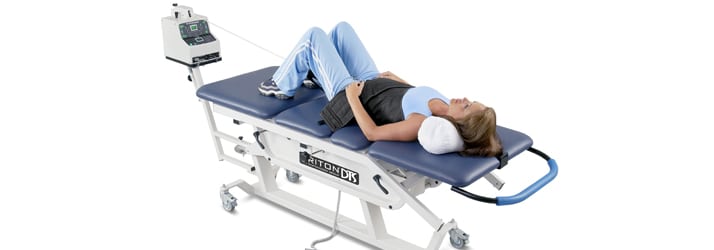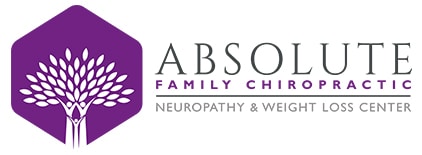Is Spinal Decompression Right for You?
Is Spinal Decompression Right for You?

If you've been experiencing back pain and other related symptoms for a long time, then you'll feel that it's been disrupting with your daily life. You won't be thinking much of anything else except for finding relief for the pain that you're having. Some people would take spinal decompression therapy into consideration, which can be surgical or nonsurgical. If you're still a bit skeptical about this therapeutic option, then here are some pointers that could help you decide on it.
What is nonsurgical spinal decompression?
This is a therapy that uses a motorized traction that could help relieve back pain. It works by gently stretching the spine, which helps in changing its force and position. This change will remove pressure from the spinal disks, the gel-like cushions between the bones in your spine, by forming negative pressure in the disc. The result will cause the bulging or herniated disks to retract, thus taking away the pressure in your nerves and other structures in the spine. It will then promote proper circulation of oxygen, water, and nutrient-rich fluids into the disks so that they can heal.
Nonsurgical spinal decompression can be used to treat the following:
- Back or neck pain or sciatica
- Bulging or herniated disks
- Worn spinal joints
- Injured or diseased spinal nerve roots
More research is required to establish the effectiveness and safety of nonsurgical spinal decompression. To find out how effective it is, researchers must compare spinal decompression with other alternatives to surgery. These includes the following:
- Acupuncture
- Bracing
- Exercise
- Chiropractic
- Limited rest
- Physical therapy
- Steroid injections
- Nonsteroidal anti-inflammatory drugs (NSAIDs)
How is nonsurgical spinal decompression performed?
You will remain fully clothed during the spinal decompression therapy session. The doctor will fit a harness around your pelvis and your trunk. You will be told to either lie face up or down on a computer-controlled table. The doctor will then operate the computer and customize the treatment depending on the condition of your spine.
The treatment will take about 30 to 45 minutes and 20 to 28 treatments are needed that will span for 5 to 7 weeks. Before or after therapy, you will be required other forms of treatment like:
- Heat or cold therapy
- Ultrasound
- Electrical stimulation
Who is not qualified for a nonsurgical spinal decompression?
You should consult with your doctor if you're a good candidate for spinal decompression first. If you're pregnant, it's best not to try it at the moment. Also, people with any of the following conditions shouldn't have this treatment:
- Fracture
- Tumor
- Advanced osteoporosis
- Abdominal aortic aneurysm
- Metal implants in the spine
What is surgical spinal decompression?
This form of spinal decompression is something that's used for certain types of back pain but is only considered as a last resort. If other measures aren't working, your doctor will have to recommend you for surgical spinal decompression for bony growths, bulging or ruptured discs, or other spinal problems. This surgery can relieve the symptoms that's causing pressure on the nerves or spinal cord, including:
- Numbness
- Pain
- Tingling
- Weakness
Are there other types of spinal decompression surgery?
Your doctor may suggest using one or more types of back surgeries that could help relieve the pressure from your spine. Additionally, you may require spinal fusion to provide stability to your spine. These are the most common types of back surgery:
- Corpectomy - This procedure will remove a vertebral body along with disks in between the vertebrae.
- Diskectomy -This procedure will remove a portion of the disk to relieve pressure on the nerves.
- Laminotomy or Laminectomy - This procedure will remove a small portion of bone to increase the size of the spinal canal and relieve pressure.
- Osteophyte removal - Bony growths are removed during the surgery.
- Foraminotomy or Foraminectomy - This procedure will remove bones and tissues to expand the openings of the nerve roots.
What are the risks of spinal decompression surgery?
Just like any other surgery, this one also comes with risks. These are the common risks that are associated with spinal decompression surgery:
- Bleeding
- Infection
- Blood clots
- Nerve or Tissue damage
- Allergic reaction to anesthesia
Another risk of going under surgery is that it may not improve back pain that much. It can be a bit hard to really determine who can find relief from spinal decompression surgery. So, have yourself consulted by Dr. Alex Tam of Vacaville to know if you're a candidate for spinal decompression. He's the owner of the top chiropractic and holistic clinic in the Solano county so you can always expect that his results are trustworthy.
Monday
9:00am - 12:00pm
2:00pm - 6:00pm
Tuesday
9:00am - 12:00pm
2:00pm - 6:00pm
Wednesday
9:00am - 12:00pm
2:00pm - 6:00pm
Thursday
9:00am - 12:00pm
2:00pm - 6:00pm
Friday
9:00am - 12:00pm
2:00pm - 6:00pm
Saturday
Closed
Absolute Family Chiropractic
1490 Alamo Drive Suite B
Vacaville, CA 95687
(707) 474-5688




